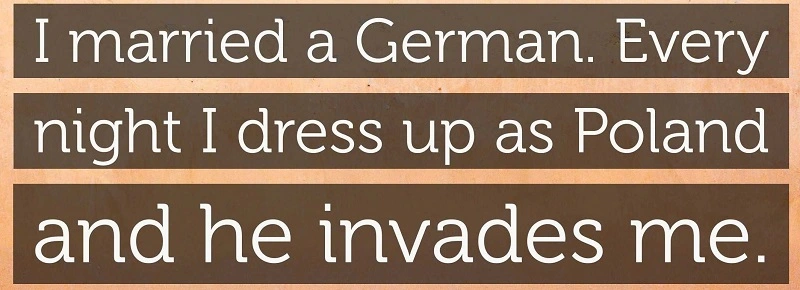Introduction
“The German Dressmaker PDF” by Susan Shalev is a riveting historical fiction novel that delves into the complexities of human survival, resilience, and the transformative power of art amidst the horrors of war. This novel captivates readers by blending rich historical detail with the intimate story of one woman’s struggle to navigate the chaos of a world torn apart by conflict.
| Name of PDF | The German Dressmaker |
|---|---|
| No Pages | 301 |
| Author | Susan Shalev |
| Originally Published | April 2, 2023 |
| Language | English |
| Genres | Historical Fiction, Biographical Fiction, Jewish Fiction |
| Size | 1.47 MB |
| Chek, latest edition |
Table of Contents
About the Author: Susan Shalev
Susan Shalev is a celebrated author known for her poignant storytelling and deep historical research. With a background that spans both literature and history, Shalev’s writing often reflects a unique blend of factual accuracy and compelling narrative. Her previous works, such as Echoes of Vienna, have similarly explored themes of resilience and human spirit. Shalev’s writing style is immersive, drawing readers into the time periods she meticulously recreates.
Plot Summary
Setting and Historical Backdrop
Set in the turbulent years of World War II, “The German Dressmaker” captures the essence of life in a war-ravaged Europe. The novel paints a vivid picture of the struggle for survival as the protagonist finds herself caught in the upheaval of a world at war.
Main Storyline and Key Events
The story follows Anna, a talented dressmaker whose life is upended when the war reaches her doorstep. As Anna is forced to leave her home, she uses her skills in dressmaking to forge connections, survive unimaginable challenges, and leave a lasting impact on those around her. From secret meetings to the heart-stopping moments of hiding from enemy forces, every chapter adds layers to a narrative filled with tension and hope.
Major Themes Explored
The novel touches on themes of loss, the power of creativity, and the resilience of the human spirit. Through Anna’s eyes, we witness the profound impact of war and the hope that art and craftsmanship can bring.
Main Characters
Anna – The Protagonist
Anna is a resourceful and determined dressmaker whose life revolves around her craft. Her love for designing clothes becomes both a means of survival and a symbol of beauty in a time of darkness. Throughout the novel, Anna’s character undergoes significant development, transforming from a hopeful artist to a survivor with an unbreakable spirit.
Supporting Characters and Their Roles
- Elsa: Anna’s childhood friend who plays a crucial role in her journey.
- Max: A mysterious ally whose true motivations are gradually revealed.
- Herr Klein: The oppressive factory owner who represents the societal constraints Anna must overcome.
Each character serves a purpose, enriching the plot and contributing to Anna’s growth.
Themes and Motifs
The Impact of War on Individuals and Society
War is more than just a backdrop in this novel—it is a force that shapes every character and event. The narrative explores the physical and emotional toll of conflict, highlighting how ordinary people adapt to extraordinary circumstances.
Survival and Resilience
Anna’s story is a testament to the strength of the human spirit. Despite overwhelming odds, she finds ways to persevere, often relying on her dressmaking skills to secure her safety and maintain a semblance of normalcy.
The Significance of Art and Craftsmanship
Dressmaking serves as a powerful metaphor throughout the novel. The intricate designs Anna creates symbolize hope and the desire for beauty even in the darkest times. The dresses she makes become symbols of identity and resistance.
Historical Context
The novel is set against the backdrop of World War II, a time of immense upheaval and suffering. Shalev brings this period to life, providing readers with a deeper understanding of the era’s hardships. Key historical events, such as the bombings and the plight of refugees, are skillfully woven into the narrative.

The Role of Dressmaking
Dressmaking is more than just a skill for Anna; it is her lifeline. Shalev uses this art form to illustrate themes of transformation and survival. Clothing becomes a way for Anna to express herself and navigate the societal structures around her. Her creations are a testament to her creativity and inner strength.
Cultural and Social Insights
The novel offers a glimpse into German culture during the war, highlighting the social hierarchies and cultural norms that shaped people’s lives. Readers gain insight into the challenges faced by women like Anna, who had to carve out their own paths in a male-dominated society.
Writing Style and Literary Techniques
Susan Shalev’s writing style is both lyrical and evocative. Her use of descriptive language brings every scene to life, from the bustling streets of wartime Germany to the quiet moments of reflection Anna experiences while sewing. The narrative structure is well-paced, keeping readers engaged without feeling rushed.
Critical Analysis
Strengths of the Novel
“The German Dressmaker” excels in its character development and emotional depth. Shalev’s meticulous research is evident, making the historical aspects both accurate and immersive.
Areas for Improvement
While the novel is compelling, some readers might find the pacing in the middle sections a bit slow. However, this deliberate pacing often serves to deepen the emotional resonance of Anna’s journey.
Reception by Critics and Readers
The novel has been well-received, with many praising Shalev’s ability to blend history and fiction seamlessly. Readers have lauded the emotional impact and the strong, relatable protagonist.
The Emotional Impact on Readers
Shalev’s storytelling evokes a range of emotions, from heartbreak to hope. Moments of tension are juxtaposed with scenes of quiet beauty, leaving a lasting impression on readers. The novel invites readers to empathize deeply with Anna and understand the complexities of war from a personal perspective.
Symbolism and Imagery
Imagery is a key component of Shalev’s writing. The vivid descriptions of Anna’s dresses serve as symbols of transformation and resistance. Other symbolic elements, such as the recurring motif of broken threads, emphasize the fragility of human connections during times of crisis.
The Journey of the Protagonist
Anna’s journey is one of immense transformation. She begins as a hopeful dreamer and emerges as a resilient survivor. Her challenges are numerous, but each obstacle she overcomes shapes her into a stronger, more determined individual.
Comparisons to Other Works
Fans of historical fiction will find similarities between “The German Dressmaker” and novels like The Nightingale by Kristin Hannah. However, Shalev’s unique focus on the art of dressmaking sets this novel apart, offering a fresh perspective on familiar themes.
Conclusion
“The German Dressmaker” is a moving tale of survival, artistry, and the indomitable human spirit. Susan Shalev has crafted a story that lingers in the minds of readers, reminding us of the beauty and resilience that can emerge even in the darkest times.
FAQs about The German Dressmaker PDF
What inspired Susan Shalev to write this novel?
Shalev was inspired by stories of real-life artisans who used their crafts to survive and bring hope during wartime.
How accurate is the historical representation in the book?
The novel is well-researched, providing an authentic portrayal of World War II-era Germany.
What themes make this novel stand out?
Themes of resilience, the transformative power of art, and the impact of war are central to the story.
Is “The German Dressmaker” suitable for young readers?
Due to mature themes and depictions of war, the novel is best suited for adult readers or mature teens.
Are there plans for a sequel or related works?
As of now, there are no announced sequels, but Shalev has hinted at exploring similar themes in future works.
Is the dressmaker a book?
Rosalie Ham’s debut novel
Is The Paris Dressmaker Based on a true story?
Based on true accounts of how Parisiennes resisted the Nazi occupation




